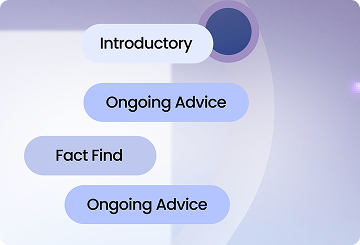Updated November 2025
Financial pressure, complex claims and rising customer expectations are reshaping how banks and insurers operate. Every day, customers call with worries about bills, uncertainty about policies or difficult life events. These moments matter, and the FCA is paying close attention to how firms handle them. The regulator wants clear evidence that monitoring is reliable, that vulnerable customers are supported and that dissatisfaction is spotted early.
Since Consumer Duty took effect in July 2023, firms have moved from planning to proving. The focus is on whether organisations can show consistent outcomes across every interaction. Yet many still depend on systems that only review a small fraction of calls or look for specific words. These methods cannot identify the tone, intent or emotional cues that shape real customer experiences.
Our 2024 Chief Risk Officer Survey reflects this shortfall. Only 19 percent of CROs feel confident they can spot every vulnerable customer during a call. Forty percent are unsure their organisation can monitor complaints and dissatisfaction effectively. These gaps create risk and weaken compliance.
To address this, firms need stronger insight, clearer visibility and reliable monitoring across their full customer journey. The five areas below are where improvements matter most.
→ Consumer Duty AI Tools: How UK Financial Services Firms Achieve 100% Compliance Coverage in 2025
Why Keyword Systems Fall Short
Many banks and insurers still use keyword systems that flag specific words such as “struggling” or “complaint”. These systems are simple to manage but they cannot interpret context. Real conversations rarely contain clear signals. Customers express vulnerability or dissatisfaction in indirect or emotional ways.
Examples we see daily include:
- “Things are really tight this month.”
Keyword system view: No flag
What AI detects: Financial pressure and potential vulnerability - “I suppose that is fine.”
Keyword system view: No flag
What AI detects: Hesitation and potential dissatisfaction - “Can we speak another time?”
Keyword system view: No flag
What AI detects: Avoidance and possible distress
Consumer Duty requires firms to understand what customers mean, not only what they say. If you monitor only 1 to 3 percent of interactions or depend on keywords, most indicators will be missed. This creates blind spots across vulnerability, complaints, clarity and fair treatment.
1. Quality Assurance: From Sampling to Full Coverage
Consumer Duty expects firms to demonstrate consistent outcomes across every interaction. This is difficult when traditional QA only reviews a small sample. Manual sampling worked when interaction volumes were low and processes were simpler. Today it leaves firms exposed.
Banking leaders face challenges such as:
- Ensuring consistent forbearance handling across large adviser networks
- Identifying mis-selling trends that appear across many calls
- Proving that affordability conversations are delivered clearly and consistently
Insurance leaders face challenges such as:
- Monitoring claims calls where customers may be distressed or grieving
- Ensuring policy explanations are complete and understood
- Detecting poor handovers or missed vulnerability indicators
AI reviews every conversation and highlights issues that require expert attention. This allows QA teams to focus on coaching, support and continuous improvement. Firms using AI-enabled QA reach full coverage while reducing assessment time by more than 70 percent. This improves compliance and strengthens customer service.
2. Agent Conduct: Real-Time Insight and Better Coaching
Consumer Duty requires clear explanations, appropriate tone and accurate handling of mandatory information. This is particularly important in forbearance, claims, complaints and affordability conversations.
In banking, firms need confidence that:
- Advisers explain affordability in language customers understand
- Risk warnings are delivered accurately
- Tone is supportive when customers face hardship
In insurance, firms need confidence that:
- Claims handlers balance process with empathy
- Policy exclusions are explained clearly
- Customers who show distress receive appropriate support
AI-driven monitoring identifies gaps in real time. It highlights knowledge issues, tracks improvement and shares examples from top performers. This shifts coaching from periodic reviews to continuous development and links training directly to outcomes.
3. Executive Oversight: Visibility into Causes, Not Only Numbers
Boards often receive summary KPIs that show complaint volumes, call quality scores or interaction totals. Consumer Duty expects a deeper level of understanding. Leaders must know why issues occur, how often they appear and whether actions taken are effective.
Our CRO survey shows that board visibility is limited. Sixty seven percent say less than 20 percent of board time is spent reviewing customer outcomes. Fifty nine percent say that less than half of customer feedback is used in decision making.
Strong oversight includes:
- Root cause analysis of complaints
- Visibility into examples of real interactions
- Clear understanding of recurring challenges
- Investment decisions linked to customer outcome data
AI-enabled analysis surfaces themes, patterns and verified examples so leaders can make decisions based on real customer experiences, not assumptions.
4. Complaints Management: Capturing Dissatisfaction Early
The FCA expects firms to identify every expression of dissatisfaction, not only formal complaints. Many customers do not complain through official channels. They show concern, frustration or confusion during everyday conversations.
In banking, early dissatisfaction may appear as:
- Frustration about declined payments during financial difficulty
- Confusion about fees that were not understood at the point of sale
- Concern about delays or unclear processes when switching products
In insurance, it may appear as:
- Concern about claims delays
- Uncertainty about settlement amounts
- Confusion about policy coverage that emerges during a claim
Keyword systems rarely detect these early signals. AI reviews full context, including tone, hesitation and sentiment. This allows firms to address dissatisfaction early and provide evidence of proactive management to the FCA.
5. Vulnerable Customers: Continuous Identification Throughout the Journey
Consumer Duty requires firms to identify vulnerability in every interaction. Vulnerability is dynamic. It changes with life events, financial pressure, health issues and emotional strain. Customers seldom declare it explicitly.
Signals may include:
- Indirect references to life events
- Repeated questions or comprehension issues
- Emotional distress in tone
- Avoidance of affordability discussions
- Descriptions of financial pressure
Banking examples:
- Persistent overdraft use that indicates ongoing difficulty
- Optimism bias in affordability conversations
- Customers facing short-term hardship who need tailored support
Insurance examples:
- Bereavement during claims
- Critical illness conversations
- Customers maintaining cover they cannot afford
AI models trained on sector-specific data identify patterns that suggest vulnerability. They ensure every conversation is reviewed so teams can intervene quickly and provide sensitive, appropriate support. Human judgement remains essential. AI ensures that no signal is overlooked.
Moving Forward
Manual processes and keyword systems cannot meet Consumer Duty expectations at scale. Banks and insurers that succeed have adopted AI-powered conversation intelligence to reach full oversight, improve service quality and reduce pressure on compliance teams.
For banks, this delivers:
- Monitoring for vulnerability, mis-selling and clarity across all calls
- Consistent forbearance handling
- Early detection of dissatisfaction
- Reliable evidence for decision making
For insurers, this delivers:
- Full visibility of claims calls
- Early recognition of dissatisfaction
- Support for handlers delivering empathetic service
- Demonstrable fair treatment during sensitive moments
Aveni Detect provides full conversation coverage, significant reductions in assessment time and complete visibility into customer outcomes. Firms that modernise their monitoring now will reduce risk, strengthen workflows and meet regulatory expectations more confidently.
See how Aveni Detect supports full oversight →
At a Glance: What Firms Should Evidence
| Area of Improvement | What Firms Should Evidence / Implement |
|---|---|
| 1. Governance and Oversight | Documented governance framework, clear roles and accountability, audit trail for decisions and reviews. |
| 2. Data and Customer Insight | Up-to-date, comprehensive customer data; tracking of life-events, vulnerability indicators and customer segments; regular data audits. |
| 3. Quality Assurance & Monitoring | Consistent QA standards across teams, sampling or full-coverage monitoring of customer interactions, recorded QA outcomes and follow-up actions. |
| 4. Suitability, Vulnerability & Fair Treatment | Evidence that advice and services remain appropriate over time, documentation of suitability and risk assessments, records of any vulnerability-related interventions or support. |
| 5. Transparency, Reporting & Outcome Tracking | Clear, accessible disclosures to customers; traceable records of advice or decisions; outcome tracking to show fairness, suitability and consistent treatment across customer base. |
Frequently Asked Questions
Why is good governance essential under Consumer Duty?
Strong governance provides clear accountability, enables consistent decision-making and supports proper oversight. It helps firms demonstrate they have a robust control framework that aligns with regulatory expectations.
What role does customer data play in meeting Consumer Duty requirements?
Comprehensive and up-to-date customer data allows firms to understand client circumstances, detect changes, identify potential vulnerability, and deliver suitable advice or support. Without proper data, it is difficult to evidence that treatment remains fair and appropriate over time.
Can limited QA sampling satisfy Consumer Duty compliance?
Limited sampling risks missing issues, inconsistent treatment or cases of vulnerability. A consistent QA or monitoring process (ideally covering all or most interactions) provides a stronger, more auditable basis for compliance.
How does tracking outcomes support fair treatment and transparency?
Outcome tracking enables firms to show that actions and advice have followed through correctly, that customers have been treated consistently, and that any necessary interventions have been recorded. This supports transparency, fair treatment and regulatory accountability.
What should firms do to ensure suitability and fair treatment over time?
Firms should maintain updated client records, review suitability periodically (especially after life changes), monitor for vulnerability signals, apply consistent QA and oversight, and ensure transparency in communications and decision-making.
Related Resources
-
Learn more about vulnerability detection and continuous oversight with Aveni Detect
-
For a full overview of obligations under the 2026 regime, see our Consumer Duty guide






